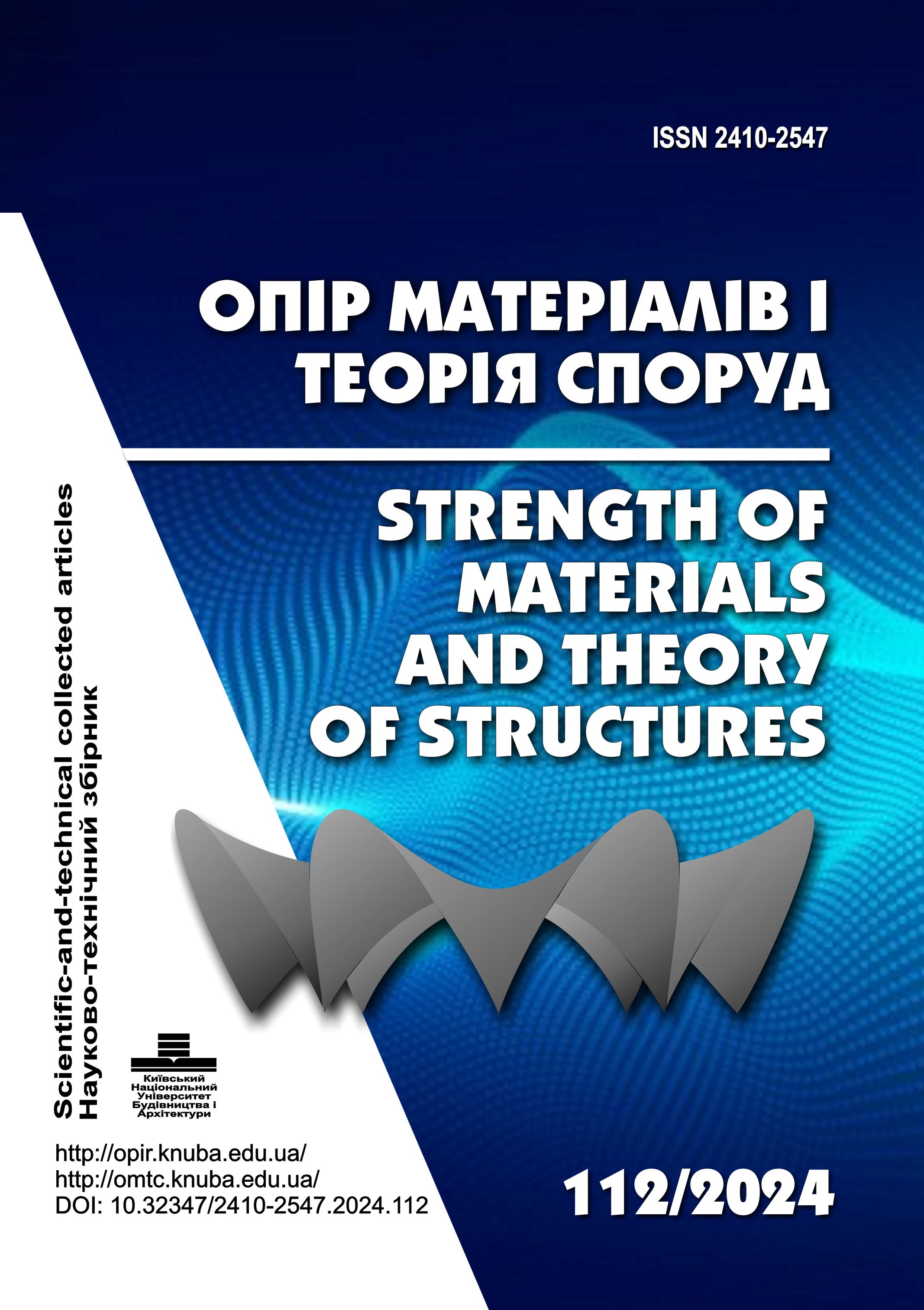The current state of the problem of numerical investigation of metal structure refusal based on dynamic monitoring
DOI:
https://doi.org/10.32347/2410-2547.2024.112.52-57Keywords:
dynamic monitoring, failure of building structures, loss of bearing capacity, metal structures, element failure, numerical studies, reliabilityAbstract
The article considers the critical role of long-term dynamic monitoring of building structures in ensuring their safety and stability. The importance of studying the structural behavior of truss structures after local failures is emphasized, which is key to the development of effective monitoring methods. The value of vertical deflections and modal frequencies as indicators of the general behavior of structures is pointed out, as well as the high costs associated with traditional monitoring methods requiring a large number of sensors. It is also emphasized that modern engineering practice does not have universal monitoring methods that would take into account all the features of construction structures, especially spatial structures with a complex design and a variety of elements. Authors calls for the development of new approaches and technologies to improve risk monitoring and management, which can prevent catastrophic consequences, as was the case with Viadotto Polchevera and other structural collapses. Attention is also drawn to current research that uses dynamic monitoring to inform the design of civil structures, including updating finite element models based on measured in-service performance. It is highlighted that long-term monitoring can provide valuable information about structural behavior, which allows for a better assessment of the condition of the structure and the prediction of potential defects. It is emphasized that a local failure can lead to the progressive destruction of the entire structure, which makes monitoring extremely important to prevent such incidents. The article concludes with conclusions about the need to establish management and maintenance procedures to maximize the life cycle of structures and obtain optimal return on investment.
References
DBN V.1.2-14-2009 «Zahalnipryntsypyzabezpechennyanadiynosti ta konstruktyvnoyibezpekybudivel, sporud, budivelnykhkonstruktsiy ta osnov» (General principles of ensuring the reliability and structural safety of buildings, structures, building structures and foundations). – Effective from 01.12.2009.
DBN V.1.2-14:2018 «Systema zabezpechennyanadiynosti ta bezpekybudivelnykhobyektiv. Zahalnipryntsypy» (A system for ensuring the reliability and safety of construction objects. General principles). – Effective from 01.09.2022.
DBN V.1.2-6:2021 «Osnovnivymohy do budivel I sporud. Mekhanichnyyopir ta stiykist» (Basic requirements for buildings and structures. Mechanical resistance and stability). – Effective from 01.09.2022.
DSTU-NBB.1.2-17:2016 «Nastanovashchodonaukovo-tekhnichnohomonitorynhubudivel I sporud» (Instruction on scientific and technical monitoring of buildings and structures). – Effective from 01.04.2017.
System for monitoring the movement of elements of structures and buildings - patent EP 1 391 692 B1 France, G01C 15/00(2006.01), Laba M.L., Gastin E., applicant and patent owner of «Soldata».
«Damage identification and health monitoring of strucnural and mechanical system from chages in their vibration characteristics», Doebling S. W., Report No. LA-13070-MS. Los Alamos, 1996, 127 р.
«A literature review of next-generation smart sensing technology in structural health monitoring», Struct Control Health Monit, 26 (3) (2019), Article e2321, 10.1002/stc.2321.
«Long-term static and dynamic monitoring to failure scenarios assessment in steel truss railway bridges: A case study», B. Torres, P. Poveda, S. Ivorra, L. Estevan, Engineering Failure Analysis, Volume 152, October 2023, 107435.
Ultrasound-based structural health monitoring methodology employing active and passive techniques», Eng. Fail. Anal., 146 (2023), Article 107077, 10.1016/j.engfailanal 2023.107077.
Analysing local failure scenarios to assess the robustness of steel truss-type bridges», Eng. Struct., 262 (2022), Article 114341, 10.1016/j.engstruct.2022.114341.
Downloads
Published
Issue
Section
License

This work is licensed under a Creative Commons Attribution 4.0 International License.
Authors retain copyright and grant the journal right of first publication with the work simultaneously licensed under a Creative Commons Attribution License that allows others to share the work with an acknowledgement of the work's authorship and initial publication in this journal.

